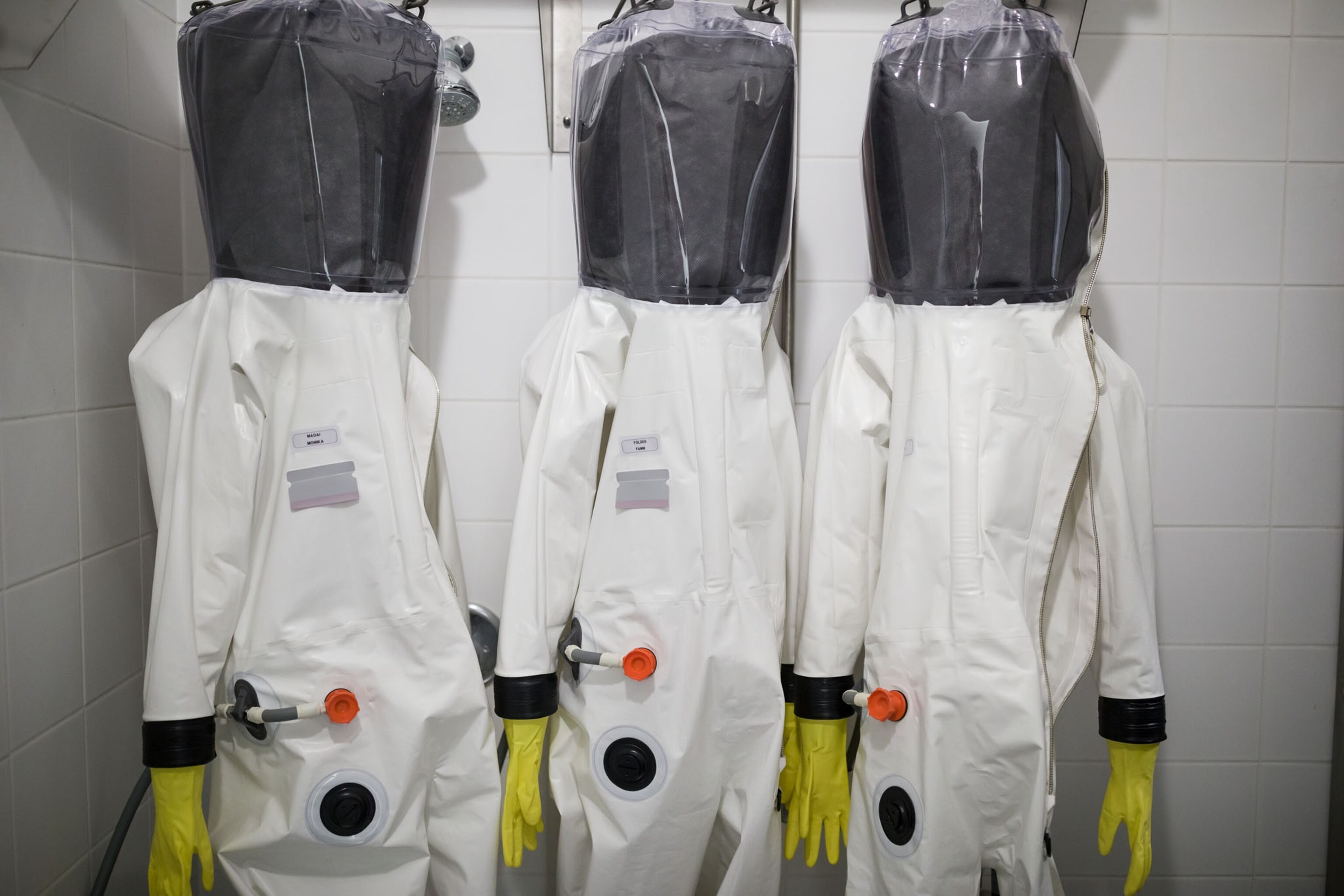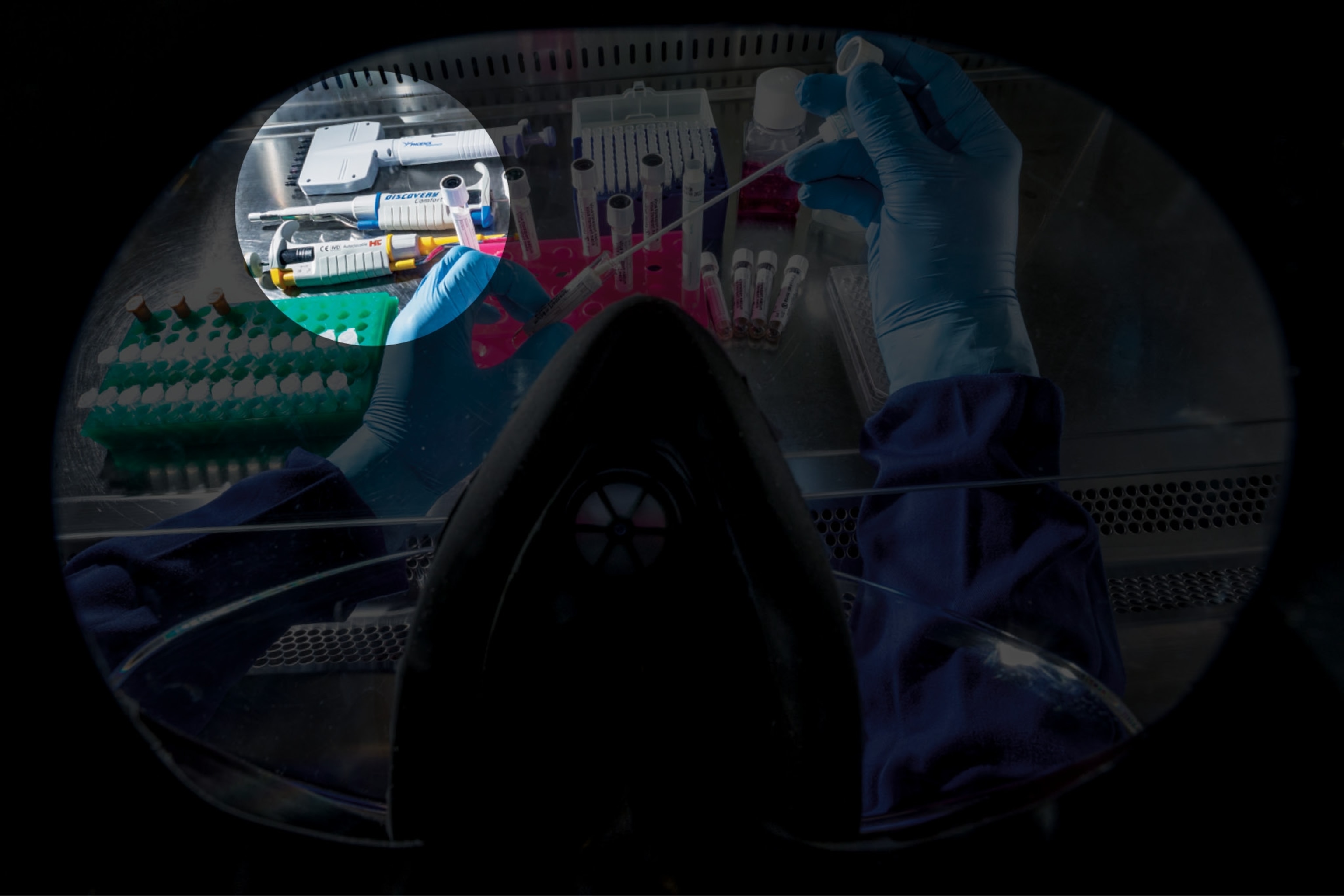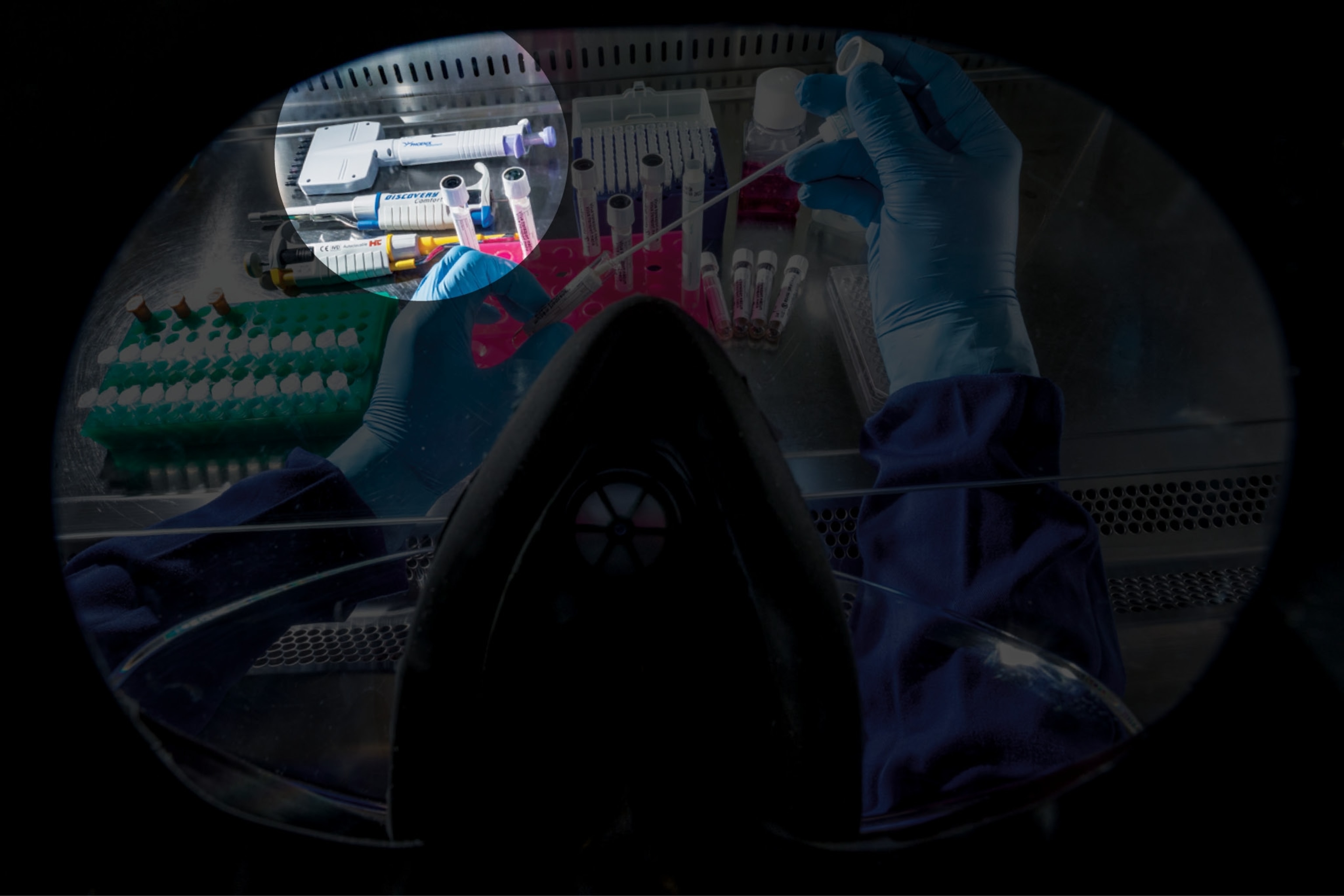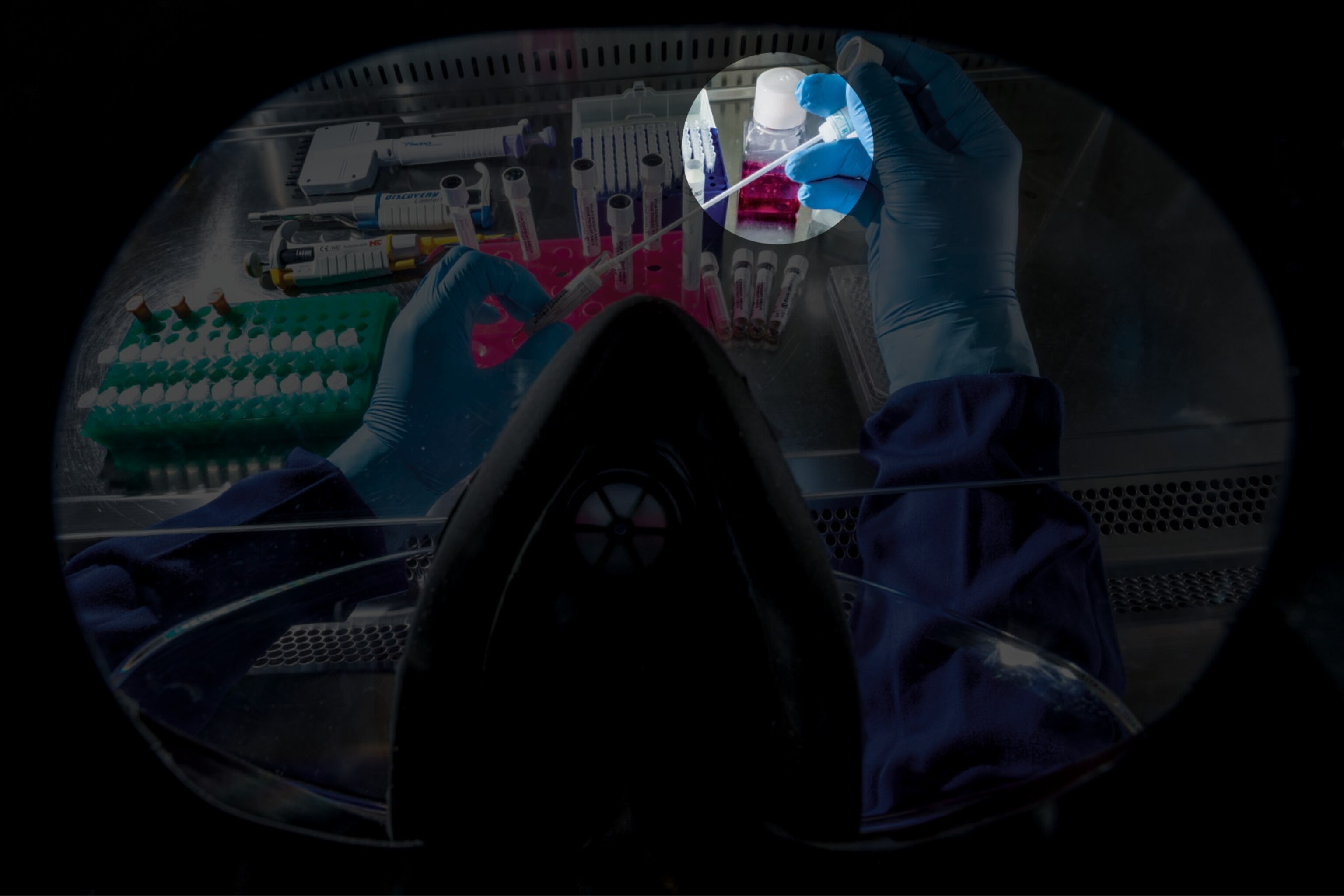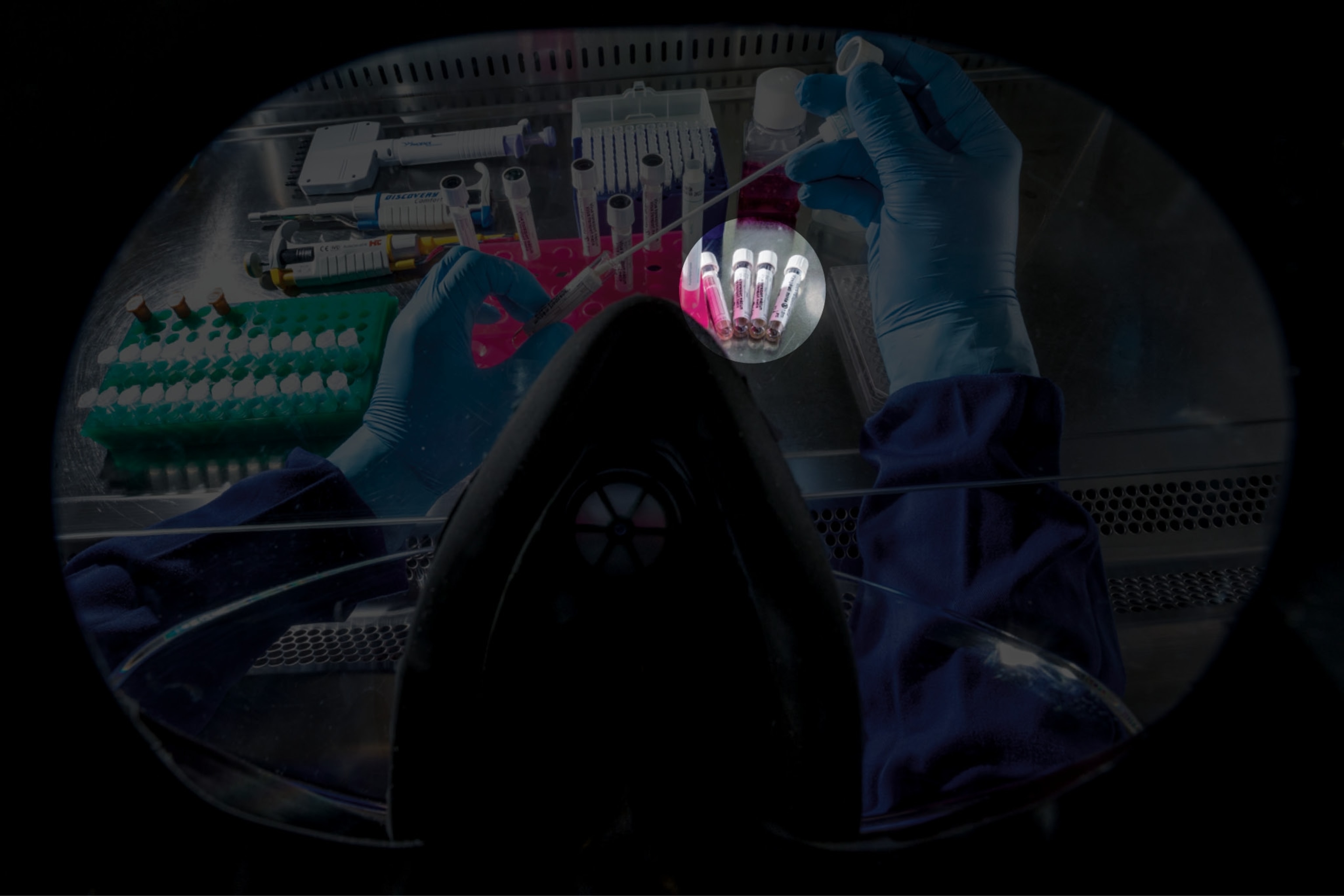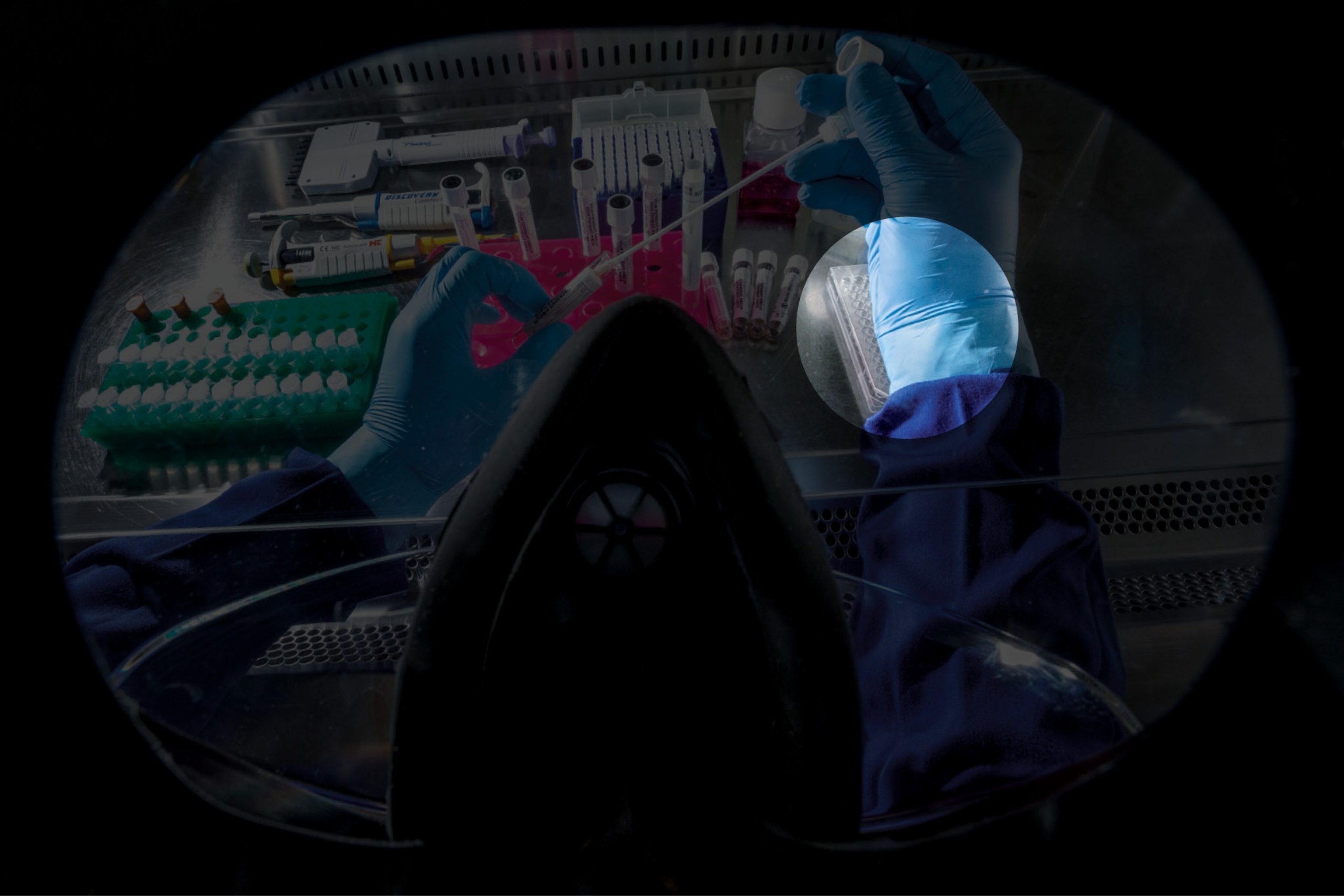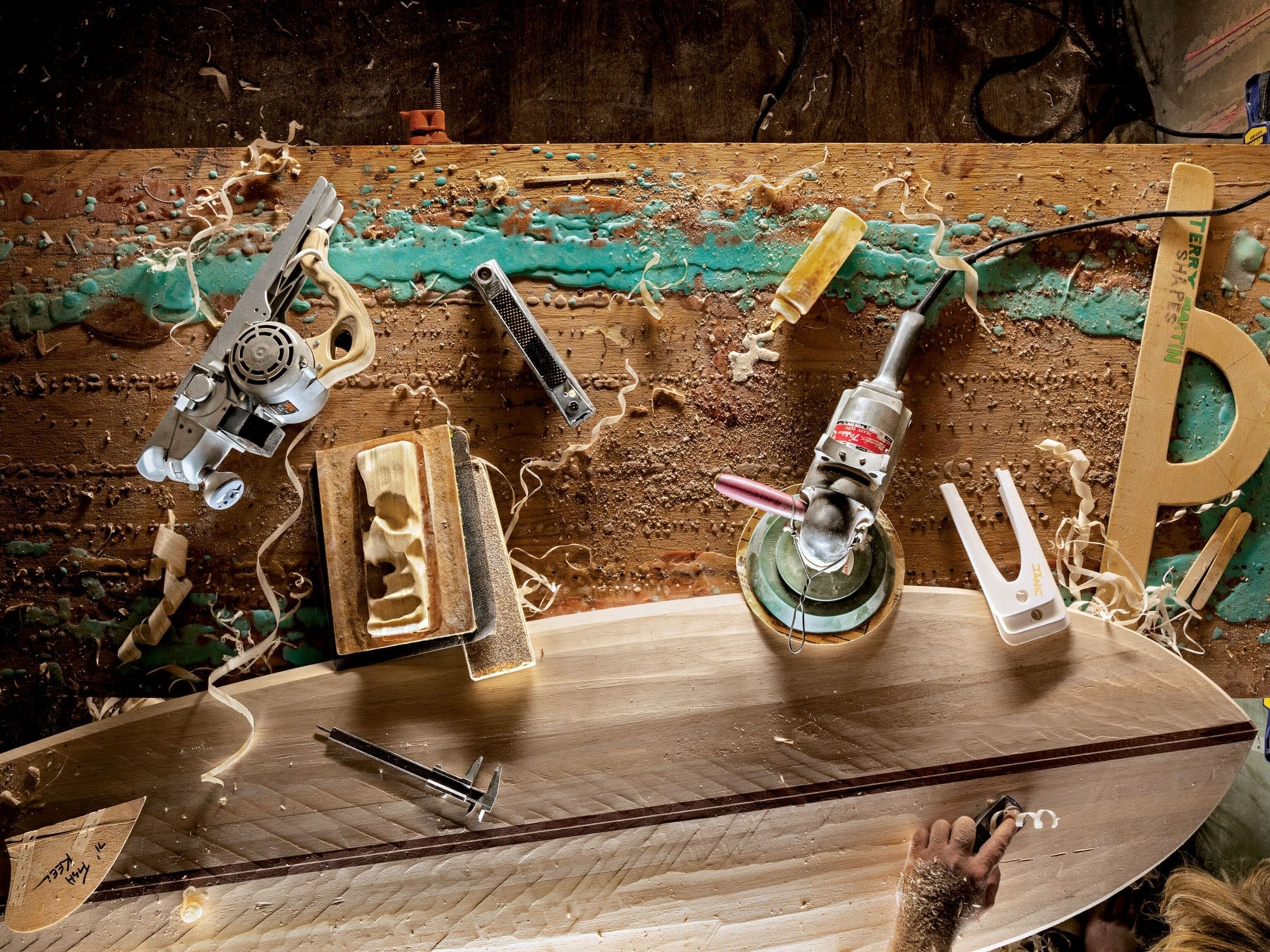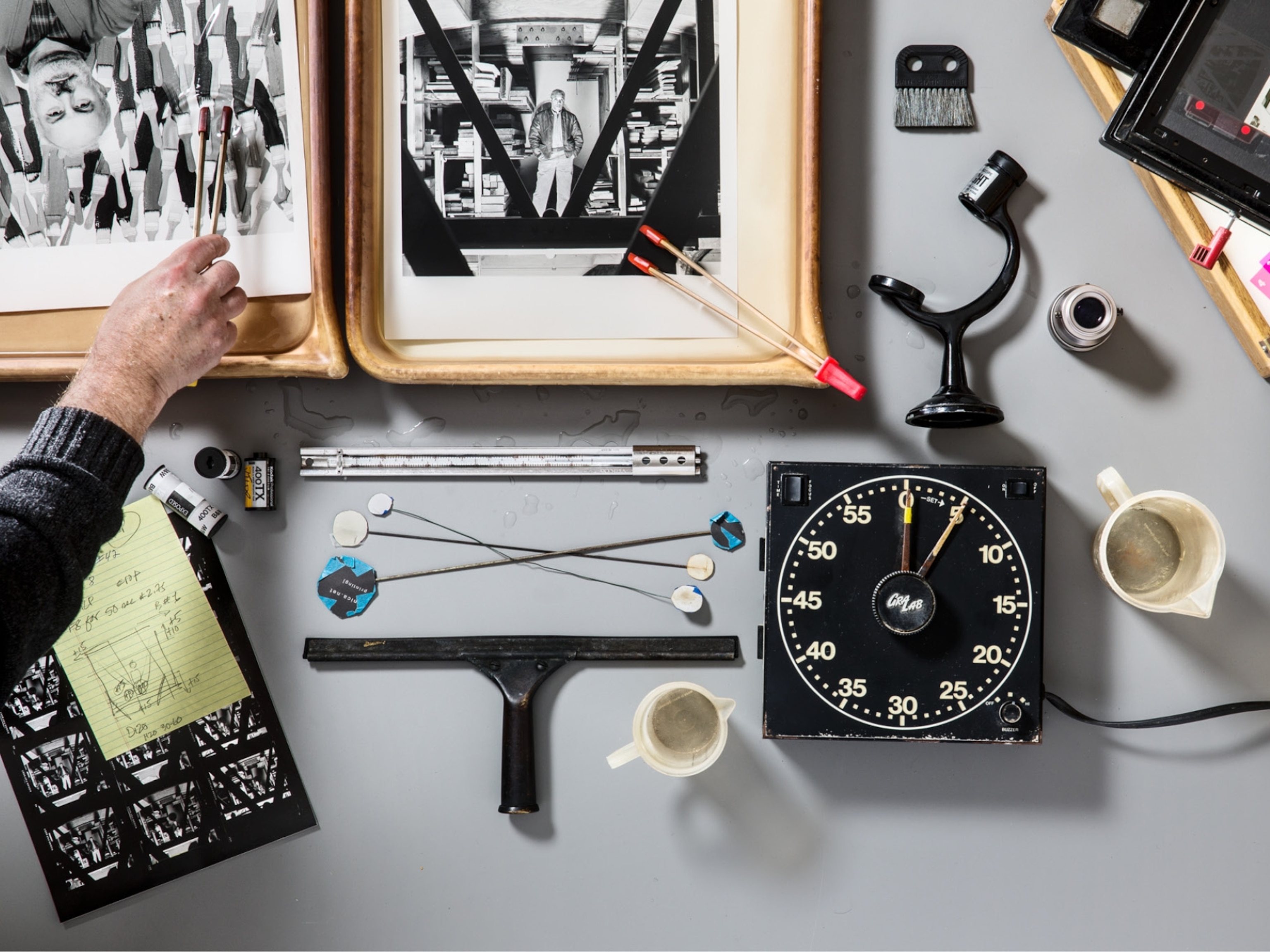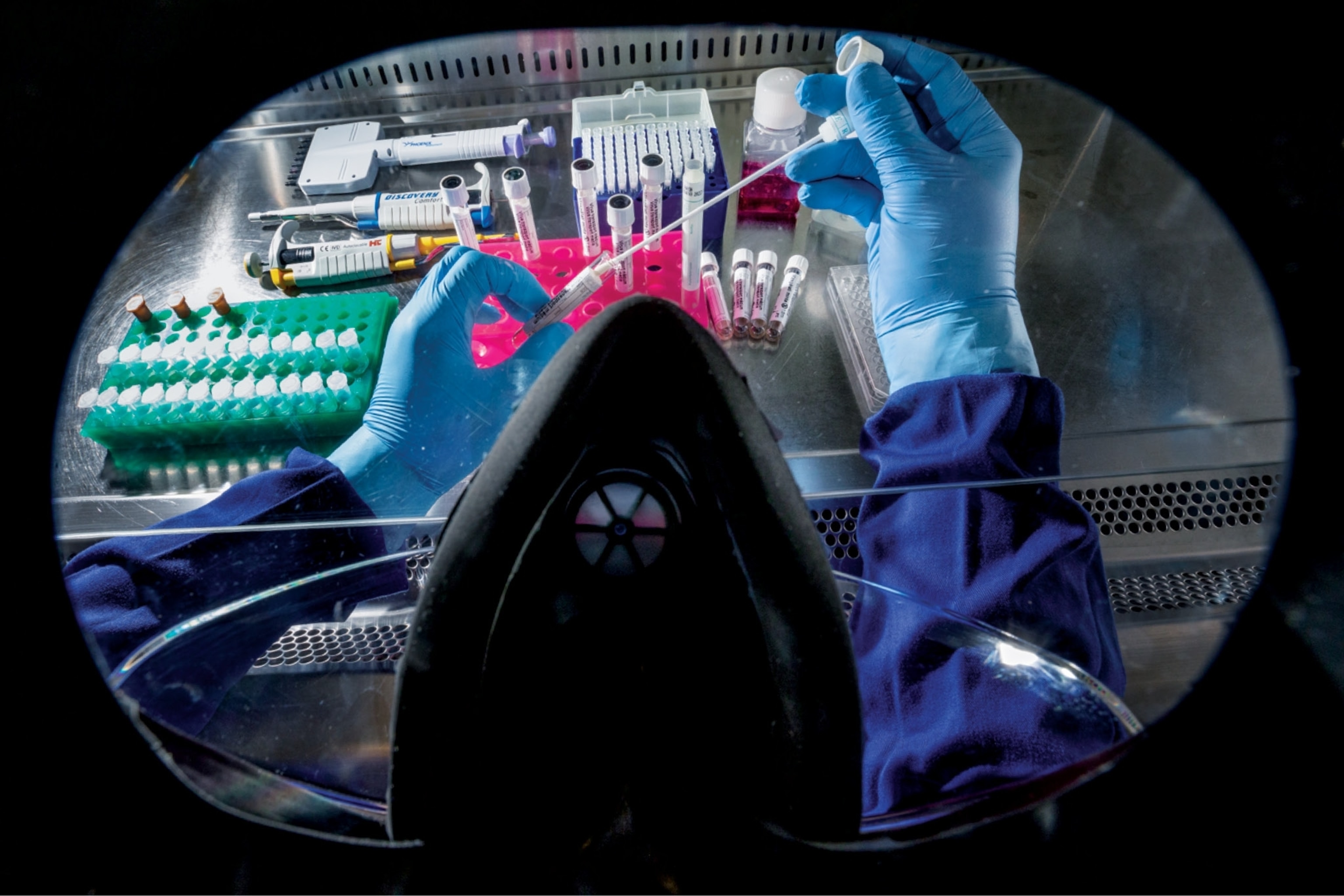
Beyond masks and gloves—here’s how the pros handle dangerous microbes
In ‘high containment’ laboratory facilities, scientists use precision equipment—and great care—to analyze pathogens like the coronavirus.
Laboratories like this “high containment” facility are used to safely handle infectious agents. Whether detecting pathogens and diagnosing diseases or unraveling the molecular structure of microbes, scientists use specialized tools with great care. This lab, at the Szentágothai Research Center at Hungary’s University of Pécs, is rated at a high biosafety level, meaning that transmission of microbes handled here can cause serious or deadly disease. This work space is photographed through a technician’s face shield and past its respirator mask valve.
